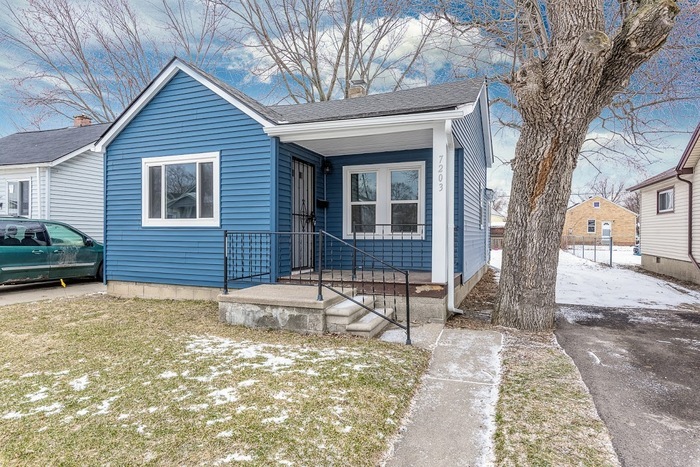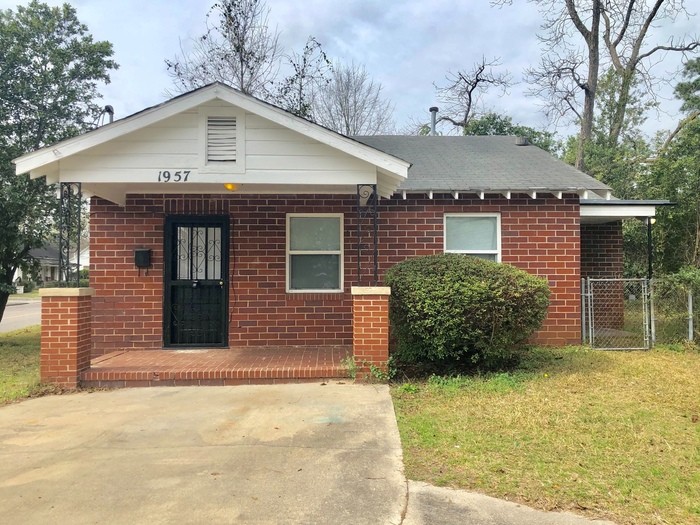House for Rent Section 8 Accepted
Understanding Section 8 Housing
House for rent section 8 accepted – The Section 8 Housing Choice Voucher Program is a federally funded program that assists low-income families, the elderly, and people with disabilities in finding safe and affordable housing. This section details the program’s requirements, application process, and the responsibilities of both landlords and tenants.
Section 8 Voucher Program and Eligibility
The Section 8 voucher program provides rental assistance to eligible households. Eligibility is determined by factors such as income, family size, and citizenship status. Applicants must meet specific income limits set by their local Public Housing Authority (PHA). The application process involves submitting documentation proving income, assets, and household composition. A thorough background check is also conducted.
Applying for a Section 8 Voucher
The application process varies slightly depending on the PHA, but generally involves completing an application form, providing required documentation, and undergoing an eligibility interview. Waiting lists are common, and the length of the wait can vary significantly based on location and demand. Applicants are encouraged to contact their local PHA for specific instructions and timelines.
Landlord and Tenant Responsibilities in Section 8 Agreements
In a Section 8 rental agreement, both landlords and tenants have specific responsibilities. Landlords are obligated to maintain the property in habitable condition and comply with all applicable housing codes. Tenants are responsible for paying their portion of the rent (the difference between the fair market rent and the voucher payment) and maintaining the property’s cleanliness and upkeep. Both parties must adhere to the terms of the lease agreement.
A Step-by-Step Guide for Landlords Accepting Section 8 Tenants
Accepting Section 8 tenants can be beneficial for landlords, providing a reliable stream of rent payments. The process typically involves registering with the local PHA, verifying the tenant’s voucher, and completing the necessary paperwork. Landlords should familiarize themselves with the program’s rules and regulations to ensure compliance. This includes understanding the inspection process and the payment procedures.
- Register with the local PHA.
- Verify the tenant’s voucher eligibility.
- Complete a Housing Quality Standards (HQS) inspection.
- Sign the lease agreement.
- Receive rental payments from the PHA and the tenant.
Finding Available Properties
Locating Section 8-approved rentals requires a targeted search strategy. Utilizing specific resources and asking the right questions can streamline the process significantly for both landlords and tenants.
Finding a house for rent that accepts Section 8 vouchers can be challenging, but there are options available. If you’re looking in the Mesa, Arizona area, you might find suitable properties by checking out listings for house for rent Mesa AZ , remembering to filter your search to include Section 8 acceptance. Many landlords participate in the program, expanding your housing choices significantly.
Search Strategies for Section 8 Rentals
Finding Section 8-approved properties often requires a more proactive approach than searching for traditional rentals. Directly contacting property management companies and landlords is often effective. Online resources specializing in Section 8 housing can also be helpful. Networking with other Section 8 tenants can also yield promising leads.
Resources and Websites for Section 8 Rentals
While a centralized national database doesn’t exist, many local PHAs maintain lists of participating landlords or have online portals to assist in the search. Some real estate websites also allow filtering for Section 8-friendly properties, though this feature may not be universally available. It’s crucial to contact PHAs directly for the most up-to-date information.
Questions to Ask Landlords About Section 8 Acceptance
Before committing to a property, prospective tenants should directly ask landlords about their Section 8 acceptance policies. Clarifying the process and expectations upfront prevents misunderstandings and delays.
- Do you accept Section 8 vouchers?
- What is your process for accepting Section 8 tenants?
- What are the lease terms and conditions?
- What are the pet policies?
Checklist for Evaluating Section 8 Properties
Prospective tenants should thoroughly evaluate properties to ensure they meet their needs and expectations. A checklist helps maintain focus and organization during the search process.
- Property condition and safety
- Neighborhood safety and amenities
- Proximity to work, school, and transportation
- Lease terms and conditions
The Application and Lease Process: House For Rent Section 8 Accepted
The application and lease process for Section 8 housing involves several steps and documents. Understanding these steps and potential challenges can significantly improve the chances of a successful outcome.
Paperwork Involved in Applying for Section 8-Assisted Rental
The application process involves submitting a completed application form, proof of income, identification, and other relevant documentation. The PHA will verify the information and conduct a home inspection before approving the voucher for use at a specific property.
Potential Challenges During the Application Process
Challenges may include lengthy waiting lists, stringent eligibility requirements, and the need for extensive documentation. Background checks and credit reports can also pose obstacles for some applicants. Thorough preparation and proactive communication with the PHA can help mitigate these challenges.
Negotiating Lease Terms with Landlords
Negotiating lease terms requires clear communication and a willingness to compromise. Understanding fair market rent values and the tenant’s responsibilities are crucial. Both parties should review and agree on all terms before signing the lease.
Steps Involved in the Inspection Process
The inspection process ensures the property meets the Housing Quality Standards (HQS) set by the PHA. Landlords must address any identified deficiencies before the voucher can be approved. This process ensures safe and habitable living conditions for tenants.
Landlord Responsibilities and Tenant Rights
Understanding the legal obligations of landlords and the rights of tenants in Section 8 housing is vital for a positive and productive landlord-tenant relationship.
Legal Obligations of Landlords Accepting Section 8 Vouchers
Landlords have a legal responsibility to maintain the property in a habitable condition, comply with all applicable housing codes, and handle rent payments according to the Section 8 program guidelines. Failure to meet these obligations can lead to penalties.
Tenant Rights in Section 8 Housing

Source: apartments.com
Tenants in Section 8 housing have the same rights as tenants in traditional rentals, including the right to a safe and habitable dwelling, protection from discrimination, and the right to privacy. They also have the right to challenge unfair eviction notices or other violations of their rights.
Common Disputes and Resolution
Disputes can arise from maintenance issues, lease violations, or payment disagreements. Open communication and adherence to the lease agreement are crucial. Mediation or legal action may be necessary in unresolved cases. Contacting the PHA for assistance can also be beneficial.
Best Practices for Maintaining Positive Landlord-Tenant Relationships

Source: section8solution.com
Maintaining a positive relationship involves clear communication, prompt responses to maintenance requests, and adherence to the lease agreement. Regular inspections and proactive communication can prevent many potential issues. Respectful communication is paramount.
Financial Aspects of Section 8 Housing
Understanding the financial aspects of Section 8 housing, including payment procedures and potential pitfalls, is crucial for both landlords and tenants.
Rent Payment Handling Under Section 8
Rent payments are typically made directly to the landlord by the PHA and the tenant. The PHA pays a portion of the rent, and the tenant pays the remainder. The exact payment amounts are determined by the voucher amount and the tenant’s contribution.
The Housing Authority’s Role in Payments
The Housing Authority acts as an intermediary, ensuring that landlords receive their payments on time and that tenants meet their financial obligations. They also oversee the inspection process and handle any disputes regarding payments.
Potential Financial Pitfalls
For landlords, potential pitfalls include delays in payments or difficulty in collecting the tenant’s portion of the rent. For tenants, potential issues include maintaining consistent income to meet their rental contribution and understanding the payment schedule.
Typical Costs Associated with Section 8 Rentals

Source: apartments.com
The costs associated with Section 8 rentals vary depending on location and property type. However, typical costs include rent, utilities, security deposit, and potentially other fees. These costs should be clearly Artikeld in the lease agreement.
| Cost | Amount (Example) | Notes |
|---|---|---|
| Rent (Landlord Portion) | $1000 | Paid by PHA |
| Rent (Tenant Portion) | $300 | Paid by Tenant |
| Utilities | $200 | Paid by Tenant |
| Security Deposit | $500 | Paid by Tenant |
Illustrative Examples of Section 8 Rentals
This section provides hypothetical examples of Section 8 properties to illustrate the diversity of housing options available through the program.
Example Properties, House for rent section 8 accepted
Example 1: A two-bedroom apartment in a quiet suburban neighborhood. Rent is $1200, with a tenant contribution of $300. The apartment features modern appliances and on-site laundry facilities. The neighborhood offers easy access to public transportation and local amenities.
Example 2: A three-bedroom house in a family-friendly neighborhood. Rent is $1500, with a tenant contribution of $450. The house includes a backyard and a two-car garage. The neighborhood features good schools and parks.
Example 3: A two-bedroom townhouse in a bustling urban area. Rent is $1300, with a tenant contribution of $390. The townhouse is close to public transportation, restaurants, and entertainment venues. The neighborhood offers a vibrant and diverse community.
Section 8 Rental Application Form
A typical Section 8 rental application form usually includes sections for personal information (name, address, contact details), household composition (family members, ages, relationships), income information (employment history, pay stubs, benefits), and references (previous landlords, employers). There is often a section for authorizing background checks and credit checks. A signature section confirms the accuracy of the information provided. The form typically concludes with a statement indicating the applicant’s understanding of the Section 8 program’s rules and regulations.
Q&A
What is the difference between Section 8 and other rental assistance programs?
Section 8 is a specific voucher program administered by the U.S. Department of Housing and Urban Development (HUD). Other programs may offer rental assistance but operate under different structures and eligibility criteria.
Can I choose any property I want if I have a Section 8 voucher?
No, the property must meet HUD’s standards and the landlord must be willing to accept Section 8 vouchers. The Housing Authority will also inspect the property.
What happens if my landlord violates the terms of the Section 8 lease?
Tenants should report violations to their local Housing Authority. The Housing Authority can investigate and take appropriate action, potentially including terminating the landlord’s participation in the program.
How long does the Section 8 application process typically take?
Processing times vary depending on the Housing Authority, but it can take several weeks or even months.




















